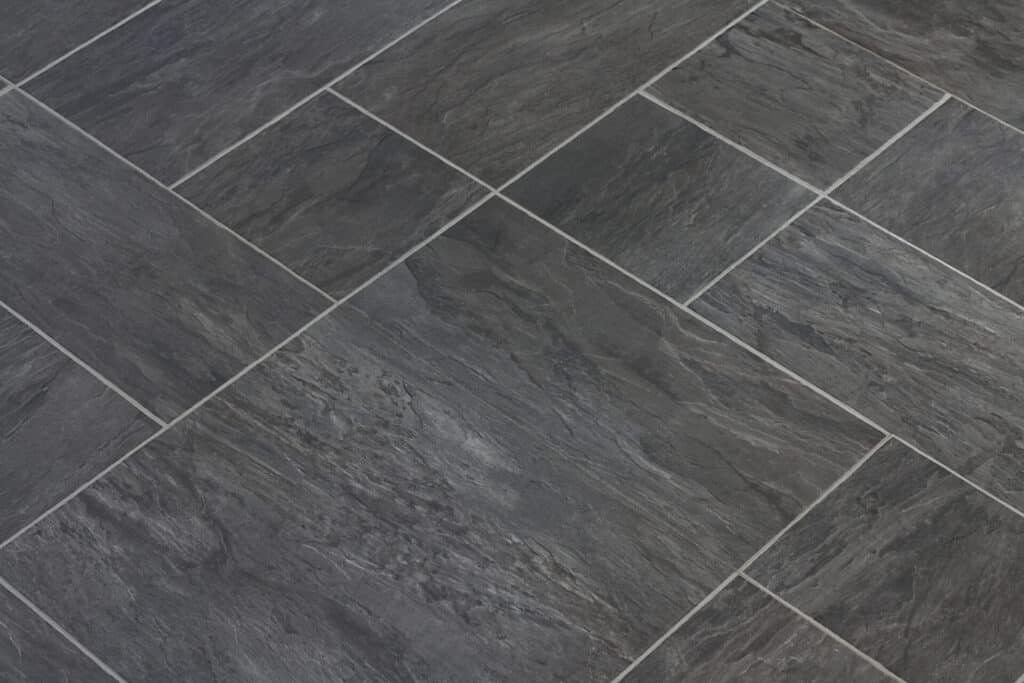
The kitchen is often considered the heart of the home, a place where meals are prepared, memories are created, and family and friends gather. With this in mind, it’s important to choose the right flooring material that not only complements the overall design of the kitchen but also stands up to the rigors of daily use. Vinyl flooring has gained recognition in recent years due to its sturdiness, affordability, and wide range of styles and designs. In this article, we will explore the various aspects of choosing vinyl floors for a kitchen and provide you with all the information you need to make an informed decision.
1. Advantages of Vinyl Flooring for Kitchens
When it comes to kitchen flooring, durability is key. Vinyl floors are highly resistant to scratches, spills, and stains, making them well-suited for the high-traffic and high-moisture environment of a kitchen. Vinyl is also simple to clean and maintain, only needs regular sweeping and occasional mopping to keep it looking its best. Additionally, vinyl comes in a wide range of colors and patterns, allowing homeowners to achieve the desired look and style for their kitchen.
2. Types of Vinyl Flooring
There are two main types of vinyl flooring: sheet vinyl and luxury vinyl tile (LVT). Sheet vinyl comes in large rolls and is typically installed in one piece with minimal seams, reducing the risk of water seepage and making it a good choice for kitchens. LVT, on the other hand, mimics the appearance of natural materials such as wood or stone and is available in individual tiles or planks. LVT offers more design options and can create a more realistic and upscale look, but may require additional maintenance to prevent water damage.
3. Durability and Wear Rating
When choosing vinyl flooring for a kitchen, it’s important to consider its durability and wear rating. The wear rating is determined by the thickness of the wear layer, which guards the design layer of the vinyl from wear and tear. The higher the wear rating, the more durable and long-lasting the flooring will be. For kitchens, it is recommended to choose vinyl flooring with a wear rating of at least 12 mil to withstand the heavy foot traffic, spills, and dropped utensils that are common in this space.
4. Water Resistance
One of the primary concerns when it comes to kitchen flooring is water resistance. Vinyl flooring is inherently water-resistant, but it’s important to choose a vinyl product that is specifically designed for high-moisture areas such as kitchens. Look for vinyl flooring that has a moisture-resistant core or is fully waterproof to prevent damage from spills, splashes, and humidity. It is also crucial to properly seal the seams and edges of the vinyl flooring during installation to create a watertight barrier.
5. Slip Resistance
Safety should always be a priority, especially in a kitchen where spills and wet surfaces are common. When choosing vinyl flooring for your kitchen, look for products that have a slip-resistant rating or are certified to be slip-resistant. The slip resistance rating is typically denoted by an R-value, with higher values indicating better slip resistance. It is also important to ensure that the vinyl flooring has a textured surface, which can further enhance traction and prevent accidents.
6. Design Options
Vinyl flooring offers a variety of design options, allowing homeowners to create the perfect look for their kitchen. From realistic wood and stone visuals to vibrant colors and patterns, vinyl flooring can suit any aesthetic preference. Also, vinyl flooring can be installed in a wide range of layouts, including herringbone, diagonal, or straight, providing homeowners with even more design flexibility. Some vinyl products also have embossed textures that mimic the look and feel of natural materials, adding depth and dimension to the flooring.
7. Cost and Installation
Vinyl flooring is generally one of the most affordable flooring options available, making it a budget-friendly choice for kitchen renovations. The cost of vinyl flooring will depend on factors such as the quality and thickness of the materials, the design and pattern, and the brand. It is recommended to set a budget before shopping for vinyl flooring to narrow down the options and make the selection process easier. Additionally, consider the cost of professional installation if you are not comfortable installing the vinyl flooring yourself. While vinyl flooring can be set up as a DIY project, hiring a professional can ensure a proper and long-lasting installation.
8. Maintenance and Cleaning
One of the core benefits of vinyl flooring is its easy maintenance. Regular sweeping or vacuuming with a soft-bristle brush attachment and occasional mopping with a mild detergent or vinyl floor cleaner is typically all that is needed to keep vinyl floors looking clean and fresh. Avoid using coarse grained cleaners or scrub brushes, as they can damage the surface of the vinyl. It’s also important to promptly clean up any spills to prevent staining or damage to the vinyl flooring.
9. Considerations for Subfloor Preparation
Before installing vinyl flooring, it’s important to prepare the subfloor properly to ensure a smooth and stable foundation. The subfloor should be clean, dry, and level to prevent any issues with the vinyl flooring down the line. If the subfloor has imperfections, such as cracks or unevenness, it may need to be repaired or leveled before installation. Additionally, consider removing any existing flooring, such as old vinyl or carpet, as they can affect the stability and durability of the new vinyl flooring.
Choosing the right flooring for your kitchen is crucial for both the aesthetic appeal and functionality of the space. Vinyl flooring is a popular choice for kitchens due to its durability, affordability, and wide range of design options. When selecting vinyl flooring for your kitchen, consider factors such as durability, water resistance, slip resistance, and design options. It is also important to set a budget, consider the cost of professional installation if needed, and properly maintain and clean the vinyl flooring to ensure its longevity. With the right vinyl flooring, your kitchen will not only look beautiful but also stand up to the demands of daily use for years to come.
